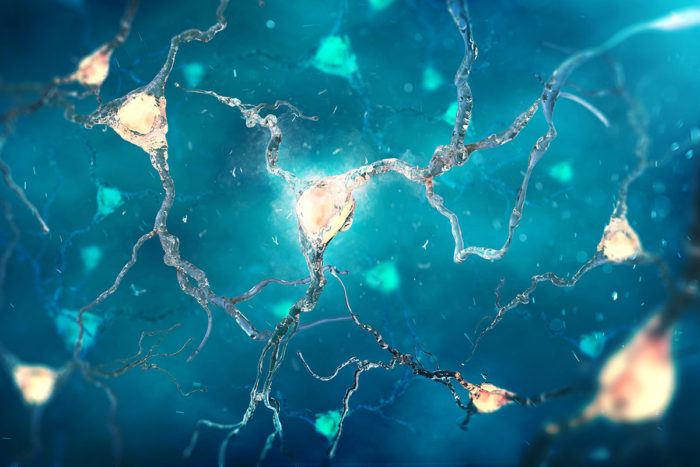Link between 2 key Alzheimer’s proteins explained
Targeting tau production may lead to treatment
 Getty Images
Getty ImagesAlzheimer's disease is characterized by clumps of two proteins – amyloid beta and tau – in the brain, but the link between the two has never been entirely clear. Now, researchers at Washington University School of Medicine in St. Louis have shown that people with more amyloid in the brain produce more tau, which could lead to new treatments for the disease based on targeting the production of tau.
It’s a paradox of Alzheimer’s disease: Plaques of the sticky protein amyloid beta are the most characteristic sign in the brain of the deadly neurodegenerative disease. However, many older people have such plaques in their brains but do not have dementia.
The memory loss and confusion of Alzheimer’s instead is associated with tangles of a different brain protein – known as tau – that show up years after the plaques first form. The link between amyloid and tau has never been entirely clear. But now, researchers at Washington University School of Medicine in St. Louis have shown that people with more amyloid in their brains also produce more tau.
The findings, available March 21 in the journal Neuron, could lead to new treatments for Alzheimer’s, based on targeting the production of tau.
“We think this discovery is going to lead to more specific therapies targeting the disease process,” said senior author Randall Bateman, MD, the Charles F. and Joanne Knight Distinguished Professor of Neurology.
Years ago, researchers noted that people with Alzheimer’s disease have high levels of tau in the cerebrospinal fluid, which surrounds their brain and spinal cord. Tau – in the tangled form or not – is normally kept inside cells, so the presence of the protein in extracellular fluid was surprising. As Alzheimer’s disease causes widespread death of brain cells, researchers presumed the excess tau on the outside of cells was a byproduct of dying neurons releasing their proteins as they broke apart and perished. But it was also possible that neurons make and release more tau during the disease.
In order to find the source of the surplus tau, Bateman and colleagues decided to measure how tau was produced and cleared from human brain cells.
Along with co-senior author Celeste Karch, PhD, an assistant professor of psychiatry, and co-first authors Chihiro Sato, PhD, an instructor in neurology, and Nicolas Barthélemy, PhD, a postdoctoral researcher, the researchers applied a technique known as Stable Isotope Labeling Kinetics (SILK). The technique tracks how fast proteins are synthesized, released and cleared, and can measure production and clearance in models of neurons in the lab and also directly in people in the human central nervous system.
Using SILK, the researchers found that tau proteins consistently appeared after a three-day delay in human neurons in a laboratory dish. The timing suggests that tau release is an active process, unrelated to dying neurons.
Further, by studying 24 people, some of whom exhibited amyloid plaques and mild Alzheimer’s symptoms, they found a direct correlation between the amount of amyloid in a person’s brain and the amount of tau produced in the brain.
“Whether a person has symptoms of Alzheimer’s disease or not, if there are amyloid plaques, there is increased production of this soluble tau,” Bateman said.
The findings are a step toward understanding how the two key proteins in Alzheimer’s disease – amyloid and tau – interact with each other.
“We knew that people who had plaques typically had elevated levels of soluble tau,” Bateman said. “What we didn’t know was why. This explains the why: The presence of amyloid increases the production of tau.”
Tau is strongly linked to brain damage, so overproduction of the protein could be a critical step in the development of Alzheimer’s, and reducing tau’s production may help treat the disease, the researchers said.
“These findings point to an important new therapeutic avenue,” Karch said. “Blocking tau production could be considered as a target for treatment for the disease.”






